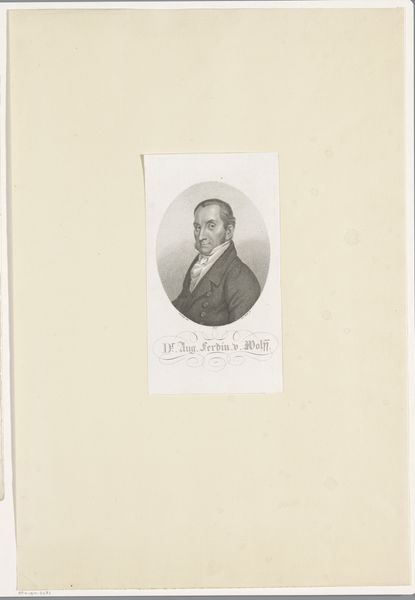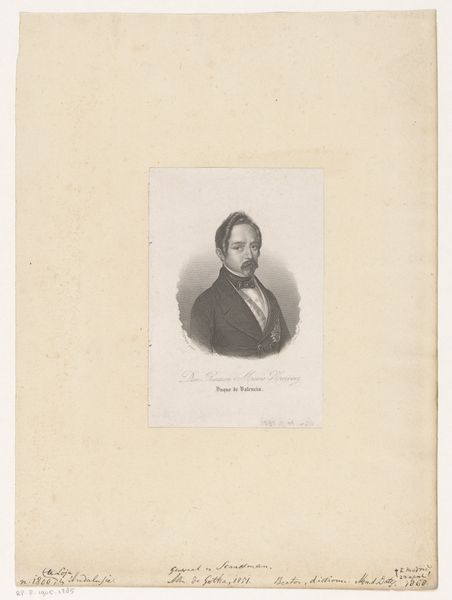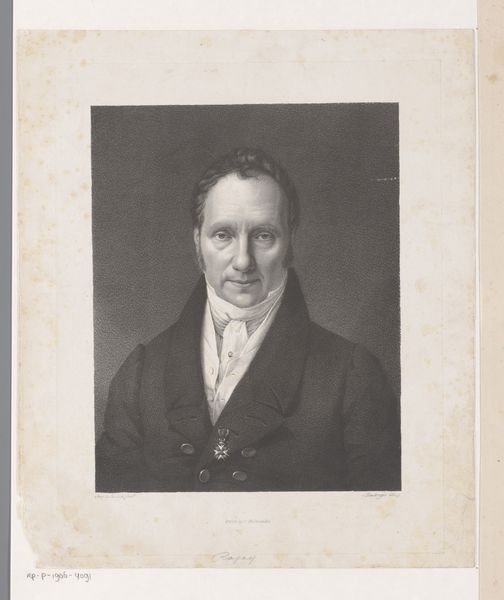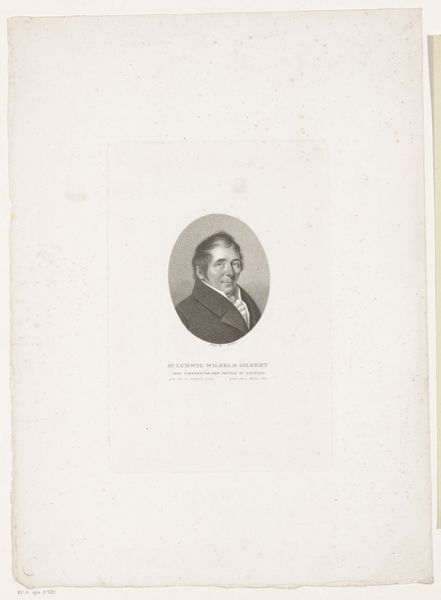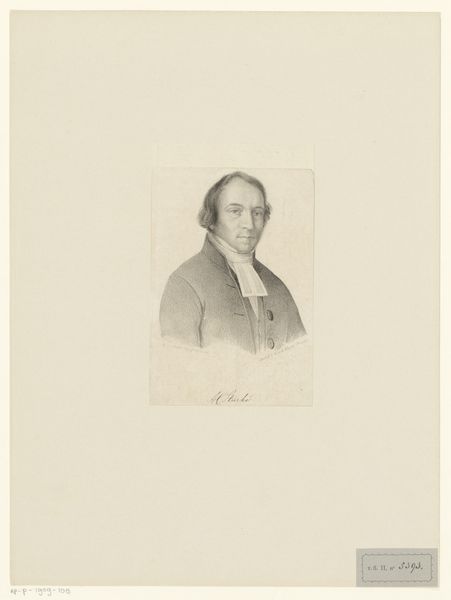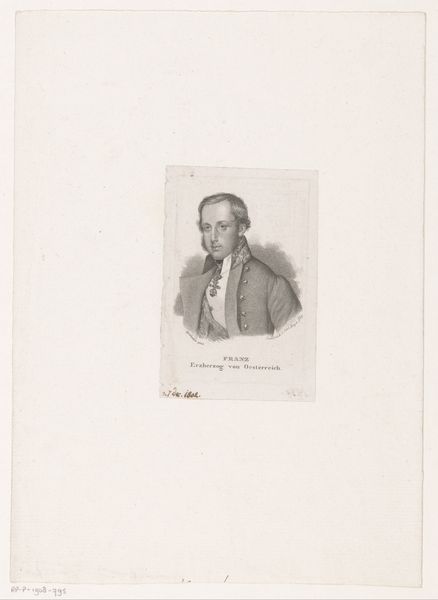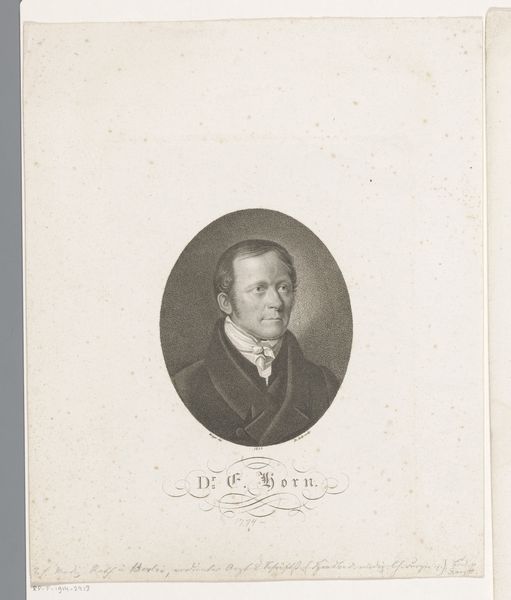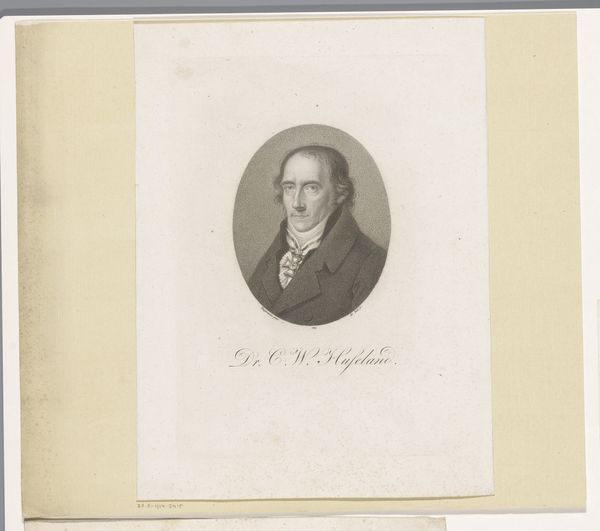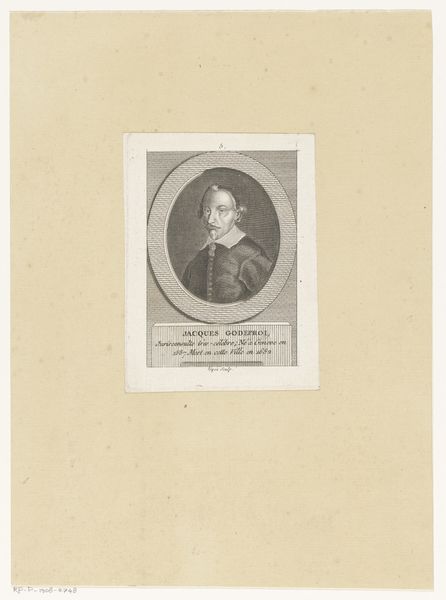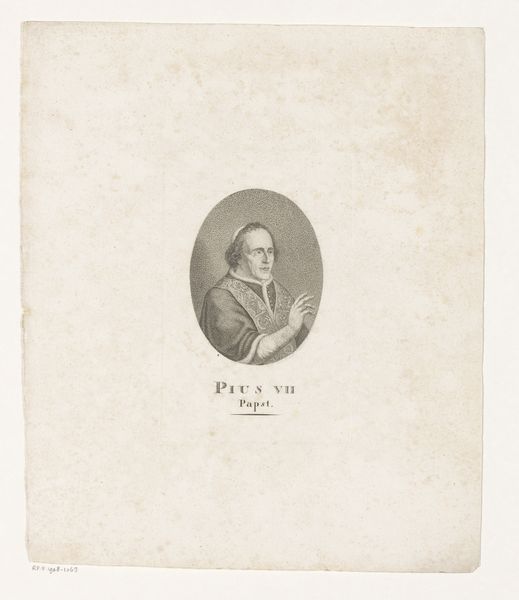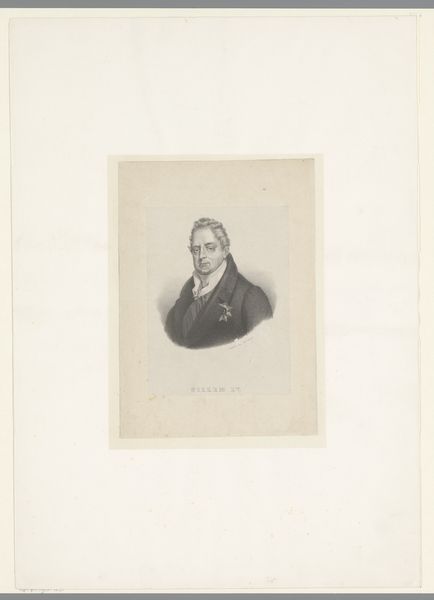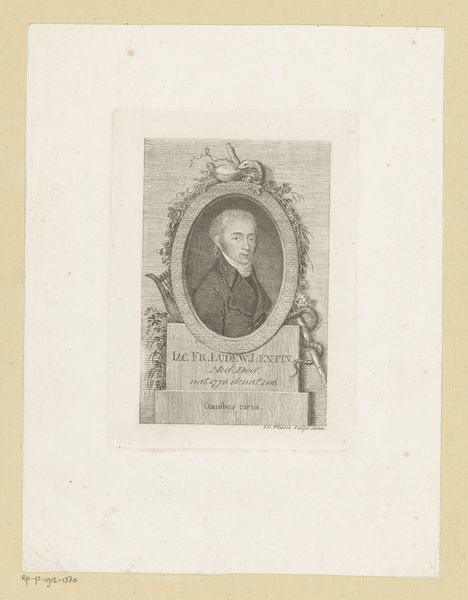
Dimensions: height 228 mm, width 166 mm
Copyright: Rijks Museum: Open Domain
Editor: Here we have what appears to be an engraving on paper, entitled "Portret van Charles Ewing," dating somewhere between 1837 and 1867. It's a formal portrait, almost severe, but with this little glimpse of a landscape behind him. What catches your eye when you look at this portrait? Curator: Ah, Charles Ewing. He looks like he knows something, doesn't he? Or perhaps he suspects *you* know something, which is even more unsettling! What intrigues me is how the artist captured a certain…resolve in his face. Look at the subtle shadows playing across his brow. Do you think it’s indicative of the times, or simply Mr. Ewing's personality shining through the paper? Editor: That's a great question. I guess the sternness could be reflective of the style of portraiture from that era, the mid-19th century, or, you're right, maybe it really does suggest the character of the man himself. But how can you tell if that's what the artist intended or whether that's our reading? Curator: It's always a dance, isn't it? Intent versus reception. My instinct says the artist wanted to convey status and intellect. Note the expertly rendered folds of his jacket, the controlled lighting, even the subtle landscape whispering beyond him—a world of cultivated refinement. It's a careful construction of an image, inviting us to wonder: what secrets does Mr. Ewing hold close? Perhaps *that* is the truest portrait of him. Don't you think? Editor: Absolutely. It makes me want to research his story! Thanks. It's fascinating to consider all these layers within a seemingly straightforward portrait. Curator: The best art always sparks that desire, that itch to know more. That's its magic. And who knows? Perhaps the real Mr. Ewing was a mischievous rogue, laughing at our earnest interpretations all along! The mystery is half the fun.
Comments
No comments
Be the first to comment and join the conversation on the ultimate creative platform.
